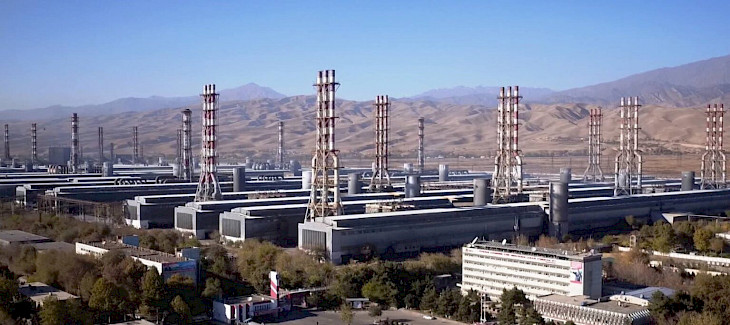Tajikistan is confidently emerging as a leader in industrial growth among Asian countries. By the end of 2023, the country's industrial production growth reached 12%, significantly surpassing the performance of its neighbors: Uzbekistan (6%), Kazakhstan (4.3%), and Kyrgyzstan (1.8%), reports Eurasiatoday.ru.
In 2024, the Ministry of Economic Development of Tajikistan forecasts an even more impressive growth of up to 21.2%.
This forecast is expected to be confirmed by the increase in the number of new enterprises. Annually, investments in existing and new factories and plants amount to approximately 19 billion somoni.
According to data from the Statistics Agency of Tajikistan, there are about 3,500 enterprises operating in the country, the majority of which are concentrated in the manufacturing and mining industries.
In 2024, 251 new industrial enterprises were launched in Tajikistan, creating about 2,000 jobs. The main focus is on the production of everyday goods.
About a quarter of the new enterprises are engaged in the food industry, construction, automotive manufacturing, and textile production. Meanwhile, the share of mining and metallurgical plants among the new facilities is only five units.
According to Sherali Kabir, the Minister of Industry and New Technologies of Tajikistan, the new enterprises have already produced goods worth 60 million somoni.
The growth of the industrial sector in Tajikistan is evident and is the result of the "Program for Accelerated Industrialization of the Republic of Tajikistan for 2020-2025," as well as the declaration of 2022-2026 as the "Years of Industrial Development."
According to the summer report of the World Bank on Tajikistan's economy, prepared by American economists, the country showed good economic performance in 2023 and early 2024, thanks to economic growth in Europe. During this period, Tajikistan's GDP grew by 8.2%.
However, Western analysts also predict an increase in inflation related to rising electricity tariffs. In 2024, an increase in the budget deficit is expected, which is partly attributed to expenses related to the construction of the Rogun Hydropower Plant (HPP).
The report notes that Tajikistan risks facing a debt crisis before the full repayment of Eurobonds associated with the Rogun HPP in 2025-2027.
Tajikistan eagerly anticipates the completion of the Rogun HPP, which will become the largest hydropower plant in Central Asia with a capacity of 3,600 MW.
This will allow for the export of electricity to neighboring countries, ensuring an inflow of funds into the economy. Most importantly, the HPP will address the domestic energy deficit and open up opportunities for the creation of new industrial enterprises in Tajikistan.
CentralasianLIGHT.org
September 4, 2024

